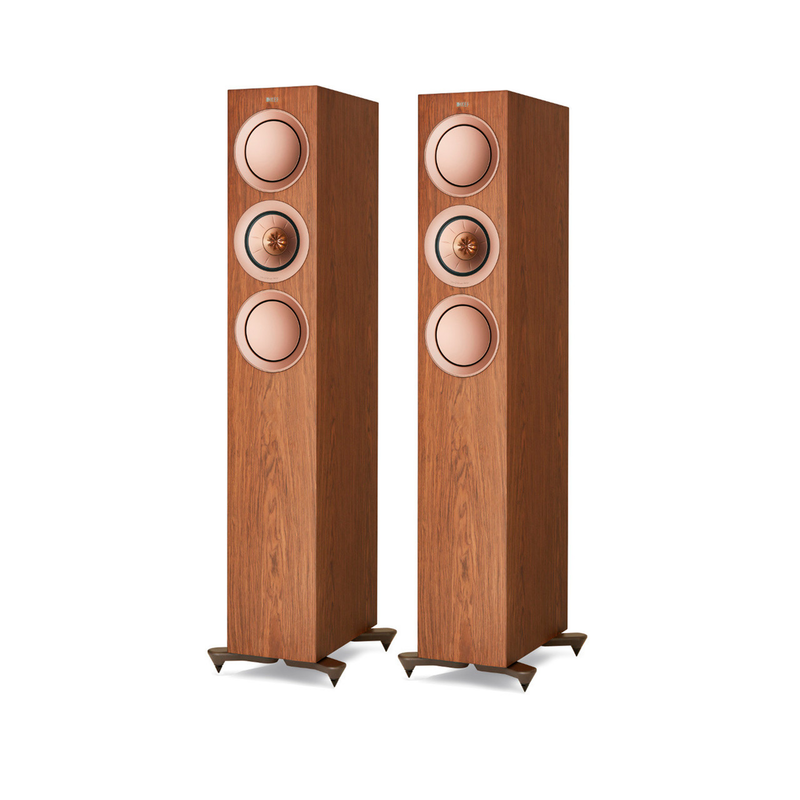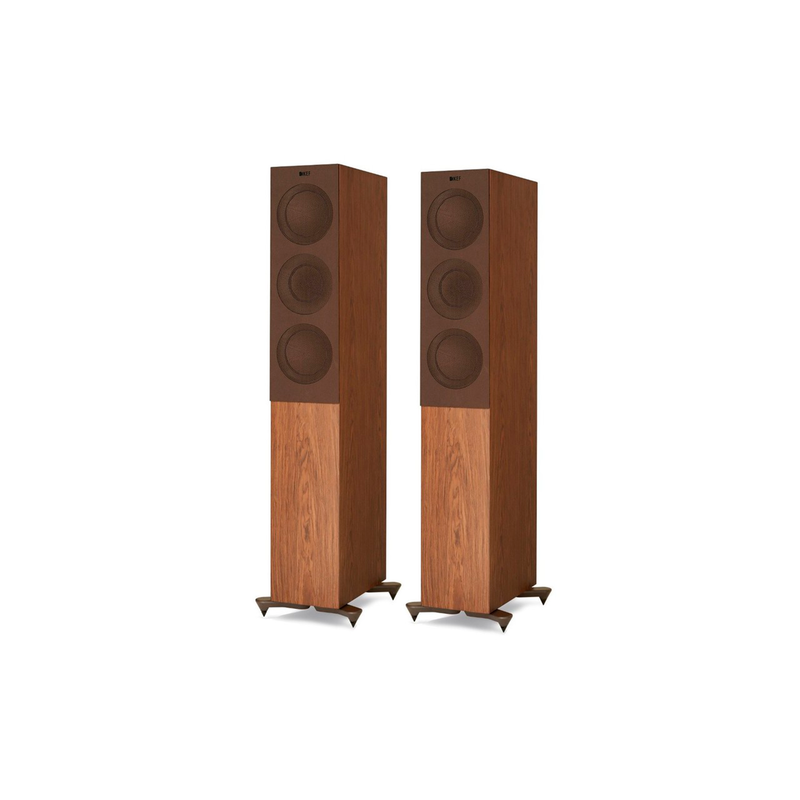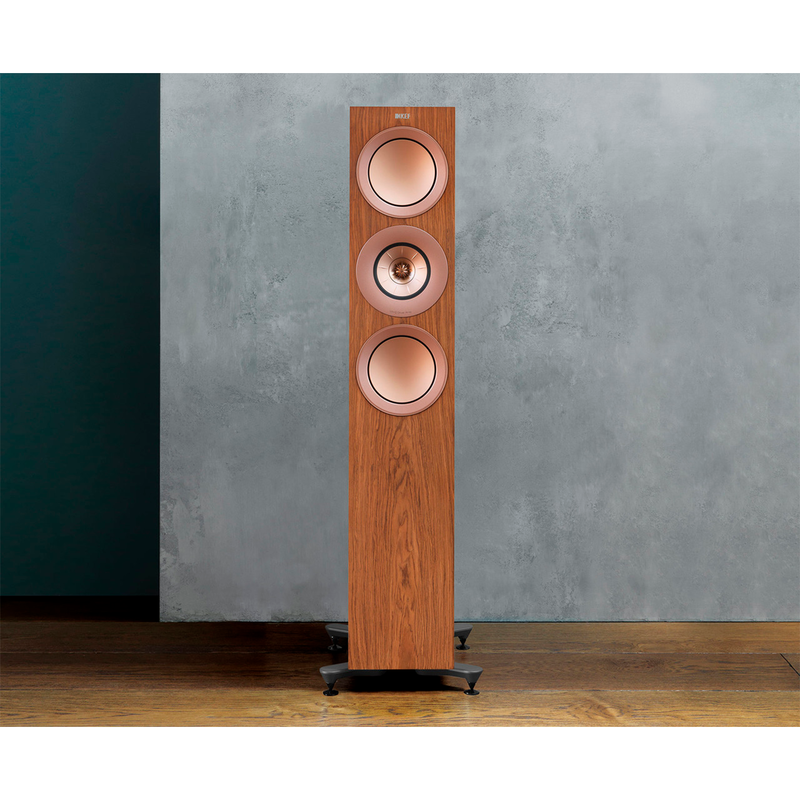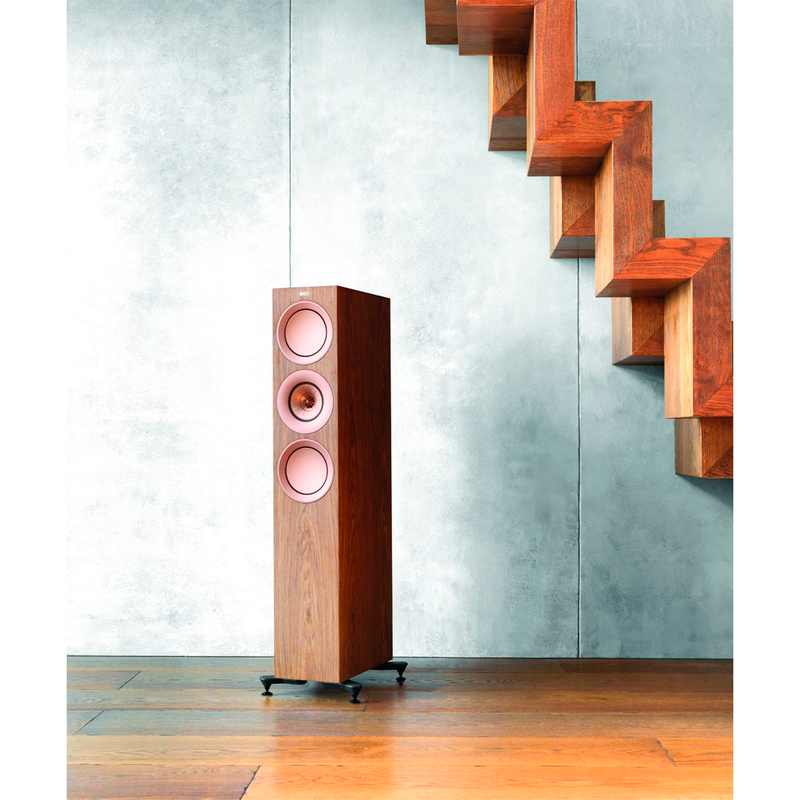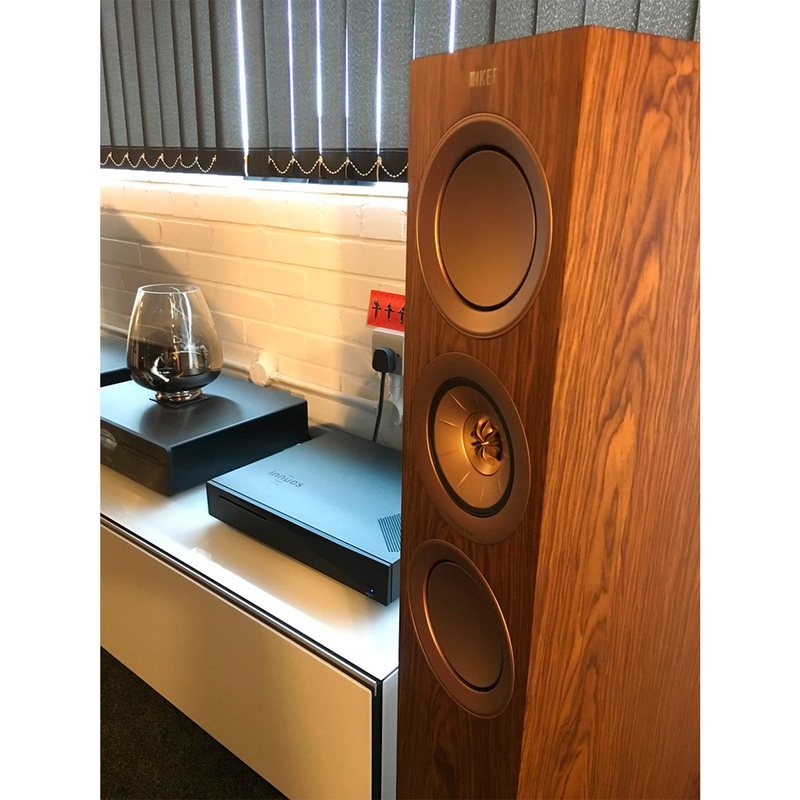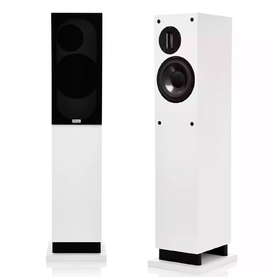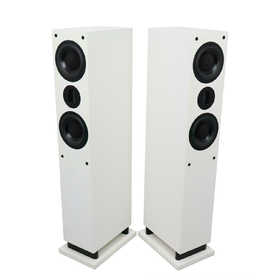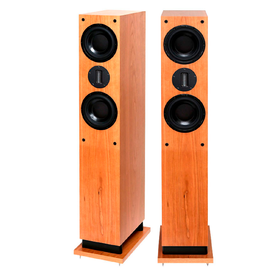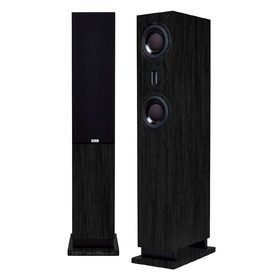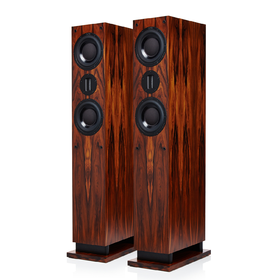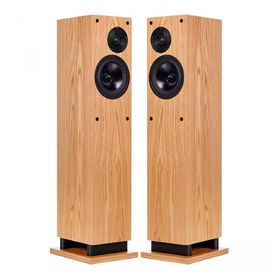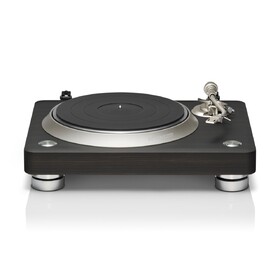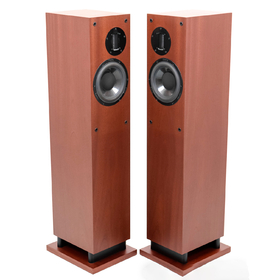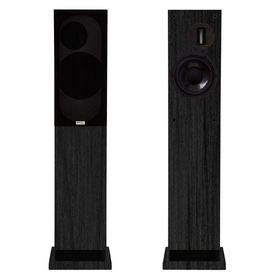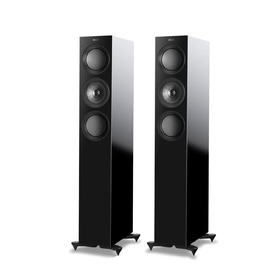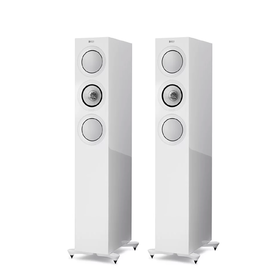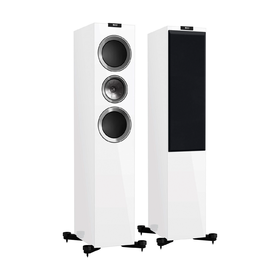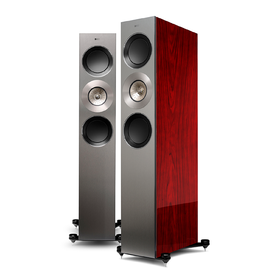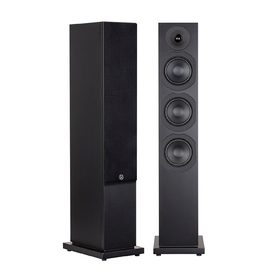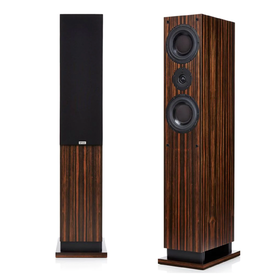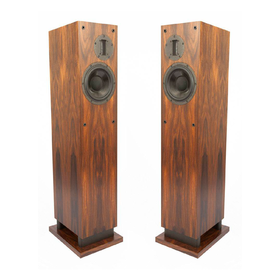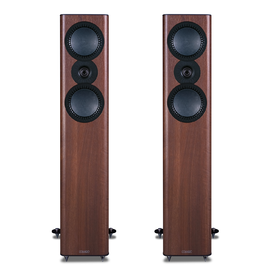R7 Walnut
Description
The KEF R7 is a medium-sized speaker system in the new R series. Combining two aluminum woofers with a diameter of 165mm, as well as a Uni-Q driver consisting of a midrange driver with a diameter of 125mm and a 25mm aluminum dome tweeter.
Product information
In the design of the KEF R7, fancy rounded shapes are not visible, and the dimensions of this speaker are quite classic. At the same time, all emitters used in the system are borrowed from the flagship Blade model, in particular, the Uni-Q mid/high-frequency emitter is completely identical to the original one. Its design includes a 125 mm ring aluminum mid-range diffuser, reinforced with radial stiffeners, and a 25 mm dome aluminum tweeter installed in the acoustic center. The dual magnetic system is ventilated. It is assembled on neodymium magnets. For better dispersion, a Tengerine Wavegude complex waveguide is installed in the center of the Uni-Q emitter.
The acoustic centers of the HF and LF speakers in this radiator are both coaxial, lie on the same axis, but also coplanar, that is, they are located in the same plane, equidistant from the listener. Thus, the acoustic centers of the two speakers are 100% coincident, and the emitter is a point source of sound in the absolute sense.
The KEF R7 model has only two woofers, not four, as in the Blade acoustics, but since they are arranged according to the D'Apollito scheme, their acoustic center is also on the same axis as the mid/high-frequency radiator. The design of the woofer drivers is identical to that used in the flagship model. However, despite the use of ultra-light structural materials, such a mobile system cannot be called light.
KEF R7 impresses with its mathematical precision of sound. Due to the fact that the entire frequency range is reproduced from almost one point in space, the sound scene is drawn incredibly focused, in the smallest details. What is characteristic is that significant movement within the stereo base has little effect on the perception of music. The focus of the scene is barely reduced, but the distortion of the frequency response characteristic of off-axis listening is practically absent.
The aluminum diffusers of the Uni-Q module do not have characteristic metallic overtones, where needed, they can play softly, warmly and delicately. The vocal range is delivered beautifully, and the soulful performance of the music makes for goosebumps. A low level of distortion and an even frequency response make listening as comfortable as possible. Light classics, which are full of strings, sound very beautiful, and not every acoustic system can successfully reproduce them. Intonation accuracy is good, although sometimes it feels like the music sounds a little lighter and lighter than it should be.
The upper limit of reproduced frequencies is far beyond the limits of hearing, so there is no shortage of air. As for the lower limit, it could be much lower in acoustics of this size. In general, the bass is quite accurate, well controlled, but shallow. A slight hum and loss of control can only be seen when the system tries to reproduce the lowest sounds. If you often listen to recordings of Japanese drums and organ music, you can do without a subwoofer. Dynamic capabilities are excellent in the area of the mid/high-frequency emitter, and more moderate in the bass - apparently, the design of the LF drivers does not allow them to work out sharp peaks in a flash.
Despite its hefty price tag, the KEF R7 has few real competitors on the market. It is actually a precision instrument that reproduces music and its artistic essence in the smallest details. There can be only one significant problem - the selection of worthy components. This speaker will reveal the disadvantages of the reproducing and amplifying path in no less detail than it reveals the advantages of an expensive system.
Media

